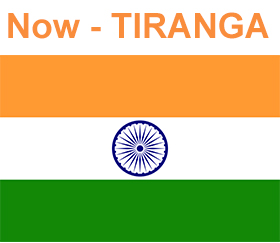

The hard truth of the pre-independence period is that India never had a National Flag that could represent it as one nation. There were flags of heroes and dynasties, rulers and warriors but not of India – the country. The need for having a flag wasn't really felt by Indians until the partition of Bengal was announced. That day was declared as the national day of mourning. A year later, on the anniversary of anti-partition movement a flag was unfurled. It was designed by Sachindra Prasad Bose.

At the international level, Madam Bhikaji Rustom Cama was the first person to unfurl a flag (the Berlin Committee Flag) that represented India in some way in an international forum, the 2nd International Socialist Congress in 1907. This flag was designed by Hemchandra Kanungo.

In 1917, the Home Rule League Movement was ably led by Shri Bal Gangadhar Tilak and Mrs. Anne Besant designed a flag to represent the spirit of the movement.

In 1921, during the Swaraj Movement, motivated by Mahatma Gandhi, Pingali Venkaiah designed the Swaraj Flag, otherwise also known as Charkha Flag. Representing the power of self-reliance, social and economic progress, and the common person— all aspirations for an Independent India — the Flag had the Charkha in the middle.

The Congress Working Committee, at its Karachi meeting on April 2nd, 1931, appointed a seven member Flag Committee, which after modification to the Charkha flag adopted a new flag in 1931. This was the origin of our Tiranga in its current form though it had a Charkha in the middle.

The big day for India came when Lord Mountbatten announced the decision to free India. The need to have a Flag that is acceptable to all parties was realized and an ad-hoc flag committee was headed by Dr. Rajendra Prasad to design the flag for free India. Gandhiji's consent was taken and Pingali Venkaiah flag was decided to be modified. Instead of the Charkha, the emblem on Ashoka's Sarnath pillar the wheel was decided upon. None of the colours had any communal significance. The National Flag was adopted on 22 July, 1947.